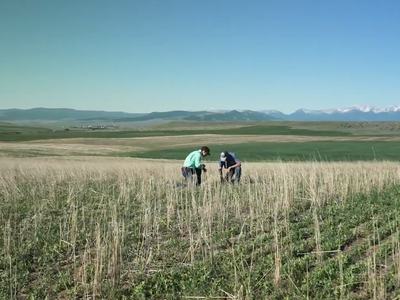Cranberry pests
As we prepare for Thanksgiving, cranberries in some form come to mind as part of the holiday meal. Yet this crop in places like Wisconsin face the threat of insects that could cause significant damage to the fruit and the plant itself. There are a number of poorly controlled insect species, and that sort of was the impetus behind going out and looking for a biocontrol agent or two that could suppress those insect populations and basically give growers another tool for the toolbox. What Shawn Steffan at USDA Agricultural Research Service colleagues have discovered is various species of nematodes that could serve as that bio agent, included in a bio insecticide applied on the plant that allows for control both above ground and more importantly, below ground, where threats like flea beetles cause significant damage to cranberry plant rootsThere are four main species. There's a complex of three moth species. These moths have caterpillars that either directly attack the fruit or attack the plant, and those pests are the cranberry fruit worm. The sarcoidosis fruit worm and the black headed firearm. Black headed firearm is a much bigger issue on the East Coast or the Cape Cod and New Jersey production areas, whereas here in Wisconsin, our main threats are these Safaga nowthis fruit worm and cranberry fruit worm. One of the reasons those two pests are particularly challenging is that they directly attack the fruit. They become literally the worm in the fruit. Here in Wisconsin, we also have a major threat posed by flea beetles, and this is just absolute trench warfare. Because this beetle is immature stages as larvae, they feed underground. And so it's really difficult to reach them with insecticides. So as larvae, they're chewing on cranberry roots and basically damaging the plant's ability to get water and resources.

















